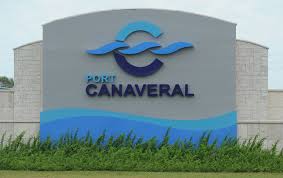MYTH NO. 2 — Commercial Rail Will Harm Seagrasses
The second “myth” according to the Canaveral Port Authority is that a commercial rail project will hurt seagrasses.
What they say is fact:
The EIS (Environmental Impact Statement) process will scientifically study all sea grass impacts. To mitigate any possible impacts, the Port-proposed north rail area can be constructed with an enhanced foundation region to create new and vibrant sea grass areas to help improve lagoon quality for future generations.
Just one problem.
The EIS is a paper chase (statement), not a study.
There will be no scientific "studies" conducted.
How do we know this?
Because of involvement in a similar project in the Florida Keys National Marine Sanctuary where members of the Chamber of Commerce wanted to dredge critical bottom habitat in order to accommodate larger cruise ships. They were seeking a city-wide, public referendum to help get the statement; these things, after all, are very expensive.
The dredging project was defeated by a 3:1 vote of the residents who chose quality of life over the enrichment of a select few that benefitted from the largesse of the cruise ship industry.
Covering the process, we heard all the same lines.
"We need to get the facts so we can make informed decisions."
"This is just a study, not an approval. We don't make the decision."
"It's not up to us."
But the reality of the situation was — and is — that the US Army Corps of Engineers has a VERY high completion rate on projects that make it to the EIS stage; nearly 100 percent.
So an EIS (statement) is not a study; its a statement on what the project will do and how to mitigate (get around) it based on existing information.
It's kind of like going to an orthopedic surgeon and being surprised when he tells you he's going to operate. It shouldn't be a surprise. He's an orthopedic surgeon.
That's what they do.
They cut.
Canaveral Port Authority CEO John Walsh continues to use the terms “statement” and “study” interchangeably. By doing so, he implies there will be actual boots-on-the-ground (or boats-on-the-water) research.
The EIS is a statement — a compilation of existing research — not a study.
The process that the CPA is trying to respect is not one to determine if they can build a commercial rail line. Rather, it is one of determining how they can build it.
That's a pretty important distinction.
nd two of their four preferred alternatives include over a mile of earthen-berm causeway.
Let's be clear about one thing: The National Surface Transportation Board promotes and permits the construction of railways and:
"has wide discretion, through its exemption authority from certain federal, state and local laws, to tailor its regulatory activities to meet the nation’s changing transportation needs"
In this case, they're looking at permitting the construction of an earthen-berm causeway one-third of the distance across the northern Banana River Lagoon No Motor Zone.
The lagoon has suffered horrendous water quality issues over the past 10 years and has lost more than 47,000 acres of seagrass.
47,000. Acres.
Research has shown that such causeways restrict the wind-driven flow of both the Banana and Indian River lagoons.
The Port-preferred rail alignments cut smack-dab through the middle of the last remaining nearly-virgin meadows of seagrass in existence throughout the five counties comprising the IRL and BRL lagoons.
It is also home to the largest concentration of West Indian manatees in the Western Hemisphere.
That’s exactly why the US Fish and Wildlife Service is concerned about it. They submitted a 19-page compilation of comments during the scoping period last fall.



















